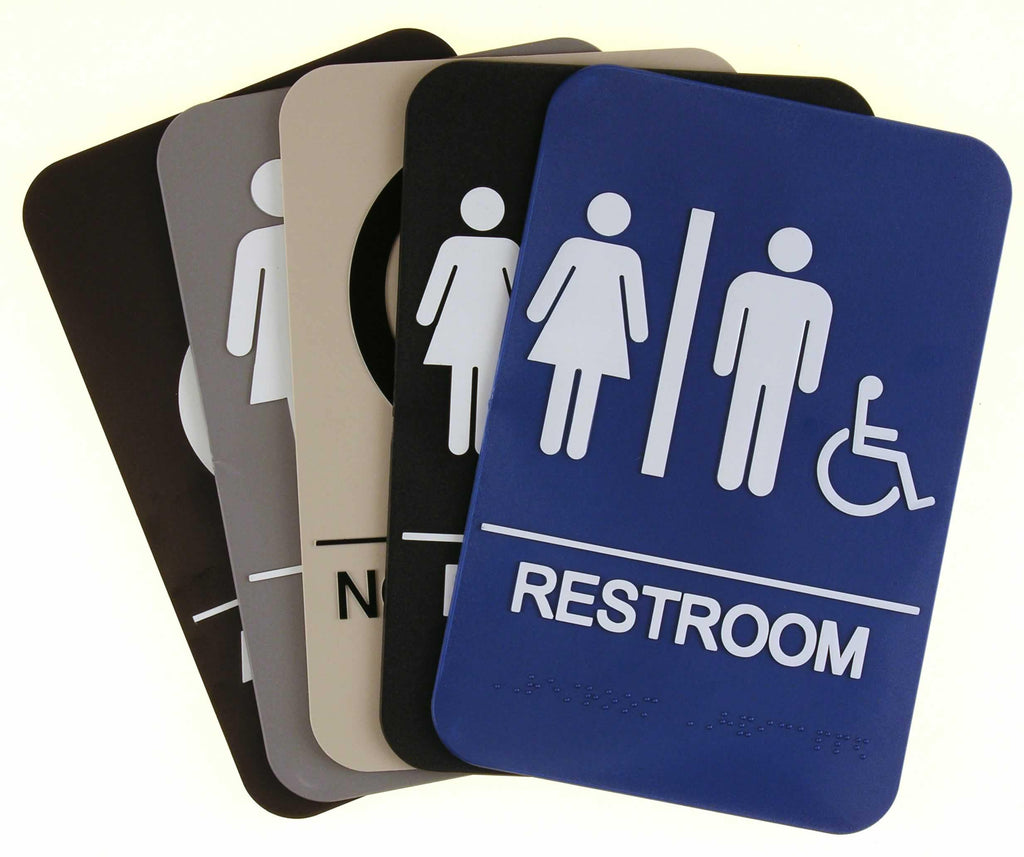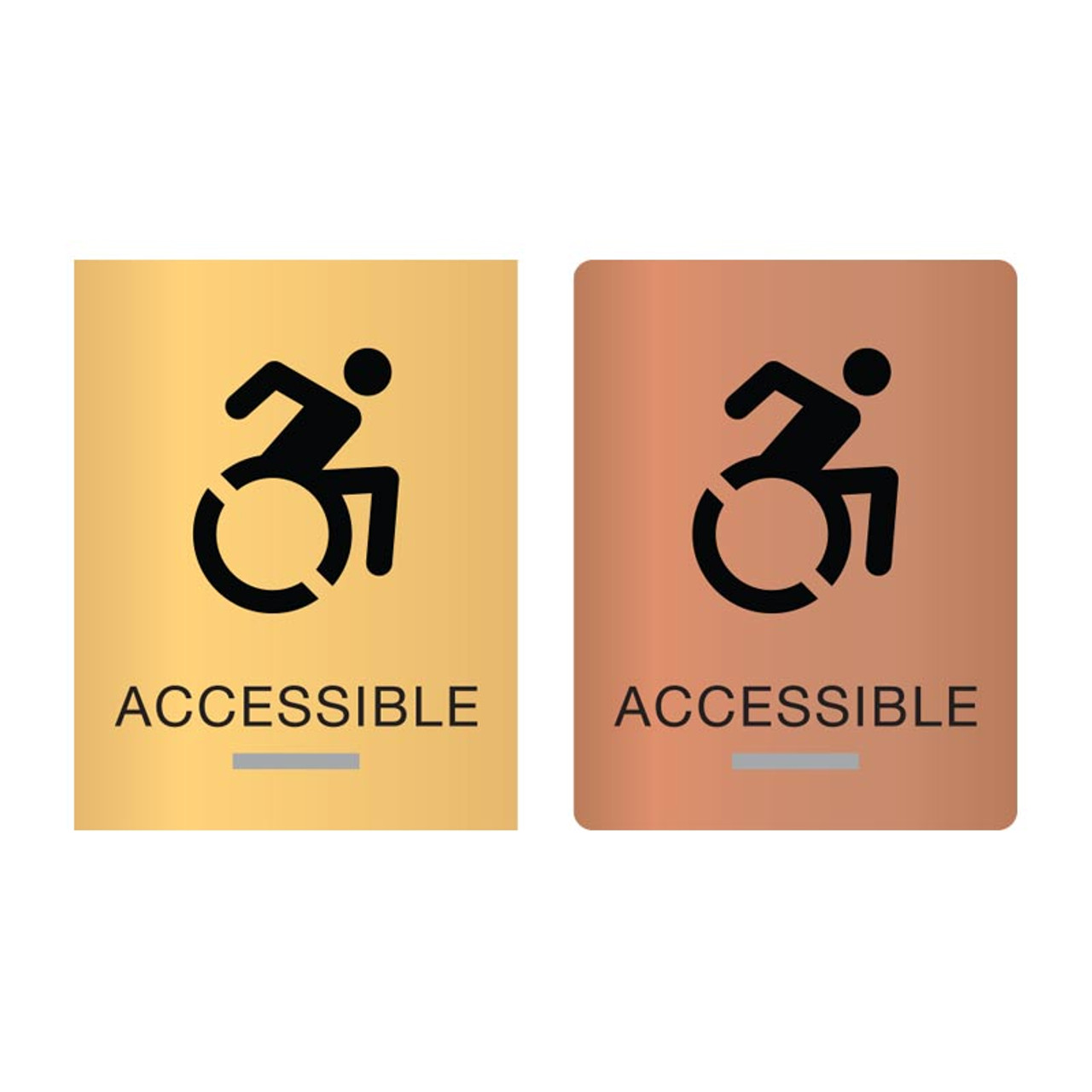Comprehending the Rules Behind ADA Signs
Comprehending the Rules Behind ADA Signs
Blog Article
Discovering the Key Features of ADA Indications for Boosted Accessibility
In the realm of availability, ADA signs serve as silent yet effective allies, guaranteeing that rooms are navigable and comprehensive for individuals with specials needs. By integrating Braille and tactile elements, these indicators damage obstacles for the aesthetically impaired, while high-contrast shade plans and readable fonts provide to varied visual needs.
Significance of ADA Conformity
Making sure compliance with the Americans with Disabilities Act (ADA) is critical for promoting inclusivity and equivalent accessibility in public areas and work environments. The ADA, enacted in 1990, mandates that all public centers, companies, and transportation services fit people with handicaps, ensuring they appreciate the exact same civil liberties and chances as others. Compliance with ADA standards not just satisfies legal commitments however likewise enhances an organization's credibility by demonstrating its dedication to diversity and inclusivity.
One of the key facets of ADA conformity is the execution of easily accessible signs. ADA signs are created to make certain that people with impairments can conveniently browse with buildings and spaces. These signs must follow certain standards pertaining to dimension, font style, color contrast, and placement to guarantee presence and readability for all. Correctly executed ADA signs helps get rid of obstacles that people with impairments commonly run into, thereby promoting their self-reliance and self-confidence (ADA Signs).
Additionally, adhering to ADA regulations can alleviate the danger of prospective penalties and lawful effects. Organizations that fall short to abide by ADA guidelines may deal with penalties or suits, which can be both harmful and monetarily challenging to their public photo. Thus, ADA conformity is integral to fostering an equitable atmosphere for every person.
Braille and Tactile Components
The consolidation of Braille and tactile elements right into ADA signs symbolizes the concepts of ease of access and inclusivity. These attributes are important for individuals who are aesthetically damaged or blind, allowing them to navigate public areas with better independence and confidence. Braille, a tactile writing system, is important in providing written details in a style that can be easily regarded through touch. It is generally positioned below the equivalent message on signs to make certain that individuals can access the details without visual assistance.
Tactile elements expand past Braille and consist of elevated characters and icons. These parts are designed to be discernible by touch, enabling people to determine room numbers, restrooms, departures, and various other essential areas. The ADA sets details guidelines pertaining to the dimension, spacing, and positioning of these responsive elements to enhance readability and ensure consistency across different settings.

High-Contrast Color Pattern
High-contrast color design play a pivotal function in enhancing the presence and readability of ADA signage for people with aesthetic impairments. These systems are necessary as they make best use of the difference in light reflectance in between message and history, making sure that signs are conveniently discernible, also from a range. The Americans with Disabilities Act (ADA) mandates using certain shade contrasts to fit those with limited vision, making it an important aspect of conformity.
The efficacy of high-contrast shades hinges on their capability to stand out in different lighting conditions, consisting of dimly lit atmospheres and locations with glare. Normally, dark text on a light background or light message on a dark history is utilized to accomplish optimal contrast. As an example, black message on a white or yellow history provides a stark aesthetic distinction that aids in quick acknowledgment and comprehension.

Legible Fonts and Text Size
When thinking about the style of ADA signage, the choice of clear font styles and proper text size can not be overstated. The Americans with Disabilities Act (ADA) mandates that fonts must be sans-serif and not italic, oblique, manuscript, very attractive, or of uncommon type.
The size of the text additionally plays a crucial duty in access. According to ADA standards, the minimum text elevation must be 5/8 inch, and it must boost proportionally with checking out distance. This is especially important in public rooms where signage requirements to be reviewed quickly and accurately. Uniformity in message dimension adds to a natural aesthetic experience, aiding people in browsing settings effectively.
In addition, spacing in between lines and letters is important to clarity. Sufficient spacing protects against characters from showing up crowded, enhancing readability. By sticking to these standards, developers can significantly boost availability, ensuring that signage serves its designated function for all people, no matter their visual capacities.
Effective Positioning Strategies
Strategic placement of ADA signs is important for making the most of availability and ensuring compliance with lawful criteria. Properly positioned indicators guide individuals with handicaps effectively, helping with navigating in public spaces. Secret factors to consider include height, exposure, and closeness. ADA standards stipulate that signs need to be mounted at an elevation in between 48 to 60 inches from the ground to guarantee they are within the line of sight for both standing and seated individuals. This conventional elevation array is critical for inclusivity, enabling wheelchair users and individuals of varying heights to access information effortlessly.
Furthermore, indications should be put beside the latch side of doors to allow simple identification before access. This positioning helps individuals situate areas and rooms without blockage. In instances where there is no door, indicators must be located on the nearest adjacent wall surface. Uniformity in sign positioning throughout a center enhances predictability, reducing complication and improving total individual experience.

Verdict
ADA indications play a vital function in promoting ease of access by incorporating features that attend to the needs of individuals with disabilities. Including Braille and responsive aspects makes sure vital info is available to the visually damaged, while high-contrast color design and readable sans-serif typefaces enhance exposure throughout numerous lights conditions. Effective placement methods, such as ideal placing heights and tactical places, additionally assist in navigating. These components jointly cultivate a comprehensive environment, underscoring the significance of ADA compliance in making sure equivalent accessibility for all.
In the realm of ease of access, ADA signs serve as quiet yet effective allies, making certain that areas are inclusive and accessible for people with handicaps. The ADA, established in 1990, mandates that all public centers, employers, and transport services accommodate people with disabilities, guaranteeing they enjoy the same rights and opportunities as others. ADA Signs. ADA indicators are designed to make certain that people with specials needs can quickly navigate with rooms and structures. ADA guidelines stipulate find out here that indicators must be installed at an elevation between 48 to 60 inches from the ground to guarantee they are within see this site the line of sight for both standing and seated individuals.ADA indications play an important duty in advertising availability by incorporating features that resolve the demands of people with specials needs
Report this page